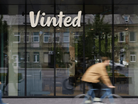Vinted Expands Beyond Fashion: A Second-Hand Success Story

As second-hand shopping reshapes consumer habits, Vinted is leading the charge with an ambitious plan to expand far beyond clothing.
The Lithuanian-based marketplace has carved out a stronghold in pre-owned fashion, but now, following a profitable year and a valuation boost to US$5.4bn, it’s gearing up to offer electronics, books, toys and video games. With this strategic pivot, Vinted aims to satisfy the rising demand for pre-owned goods while encouraging more sustainable consumer choices.
After reporting US$648m in revenue last year, Vinted’s performance and a recent US$370m secondary sale highlight its growing strength in the second-hand marketplace.
As the company’s vision extends into new product categories, its potential to drive change in consumer culture only becomes clearer.
Operational excellence over flashy features
To support this expansion, Vinted prioritises a robust operational approach, focusing less on high-profile features and more on the essential mechanics of user trust and seamless transactions.
As CEO Thomas Plantenga put it: "In the end, our vision is to make second-hand first choice globally and for any type of product you can imagine."
To strengthen its platform, Vinted has invested in infrastructure such as Vinted Go, a dedicated shipping business and implemented a luxury fashion verification service to guard against counterfeits.
Such services address persistent issues in the second-hand market, particularly for online platforms where customer trust in product authenticity is crucial.
A recent Channel 4 investigation into counterfeit products across online marketplaces emphasised these challenges, bringing renewed focus to Vinted's measures to ensure quality.
For Vinted, operational efficiency is key to building credibility in second-hand transactions.
This means integrating effective shipping solutions and strict quality control, especially as it moves into electronics, a category with complex requirements compared to fashion.
Electronic goods need more thorough checks and may come with warranty concerns, but Vinted’s experience in logistics positions it well to handle these demands.
The company’s commitment to “unsexy” but essential processes like shipping and payment integrity is the foundation of its growth.
Expanding beyond clothes and growing Scope 3 emissions impact
Vinted’s shift beyond fashion isn’t just an expansion of product lines but an opportunity to push for environmental impact on a much larger scale.
As Vinted enters electronics, toys, books and video games, it enhances its capacity to cut Scope 3 emissions, those indirect greenhouse gases from purchased goods and services.
Each resale on the platform prolongs product lifecycles, cutting demand for new manufacturing and transportation emissions that accompany first-time purchases.
Sebastiaan Lemmens, Vinted’s Strategy Director, highlights this shift: "We're well on our way to making second-hand first choice across Europe."
As the company reaches new markets, its influence on consumer habits also deepens. Vinted has already launched in eight additional European countries, including Finland, Romania and Greece, demonstrating the strength of its business model and an expanding user base.
The platform’s continued efforts in operational improvements, such as refining shipping logistics through Vinted Go, further support the second-hand market.
Streamlined logistics mean items reach buyers faster and at lower costs, making sustainable shopping more accessible. Beyond fashion, the resale of electronics offers significant Scope 3 emissions reduction potential.
Electronics manufacturing is carbon-intensive and keeping devices in use longer could directly contribute to emissions reduction goals across supply chains.
As second-hand becomes mainstream, big businesses are also joining the movement, with major retailers like Primark and H&M dedicating sections to pre-owned goods.
Such moves not only widen Vinted’s reach but reflect a broader change in consumer attitudes as economic and environmental pressures encourage shoppers towards second-hand. Vinted’s growth aligns with this shift, reinforcing its commitment to reshaping the second-hand market.
Commenting on Vinted's entry into electronics, James Rigg, CEO of Trojan Electronics Group, emphasised its potential for larger businesses: "The opportunities aren’t just for those clearing out their cupboards or sole traders searching for a supplementary income.
"Big business needs to recognise this move in the market and by forging partnerships with third-party service providers, they can capitalise on this shift in consumer attitudes."
By embedding these principles into its model, Vinted expands the second-hand marketplace beyond a trend to a sustainable industry standard.
Through its scale and strategic choices, Vinted continues to challenge consumer norms while making resale a “first choice” for a growing global audience.
Receive the next edition of Scope 3 Magazine by signing up for its newsletter.
As part of this portfolio, make sure you check out Procurement Magazine and also sign up to our global conference series - Procurement & Supply Chain LIVE.
Also check out our sister brand, Sustainability Magazine and sign up to its global conference series - Sustainability LIVE.
Scope 3 Magazine is a BizClik brand.
- The Evolving Role of Chief Sustainability OfficersScope 1 2 and 3
- Scope 3: Baltic States end Russian Energy DependenceSustainable Procurement
- Nissan Expands Green Steel to cut Scope 3 EmissionsSupply Chain Sustainability
- Evri & Protega Tackle Scope 3 via Sustainable PackagingTransportation & Logistics
Featured Articles
Estonia, Latvia and Lithuania join the European grid, cutting ties with Russian energy, a move that boosts regional security and sustainability
TÜV SÜD: New battery regulations bring Scope 3 hurdles, requiring sustainable sourcing, digital traceability and design changes increasing compliance
Nissan is scaling up its use of green steel, reducing CO2 emissions in its supply chain as part of its goal to achieve carbon neutrality by 2050

